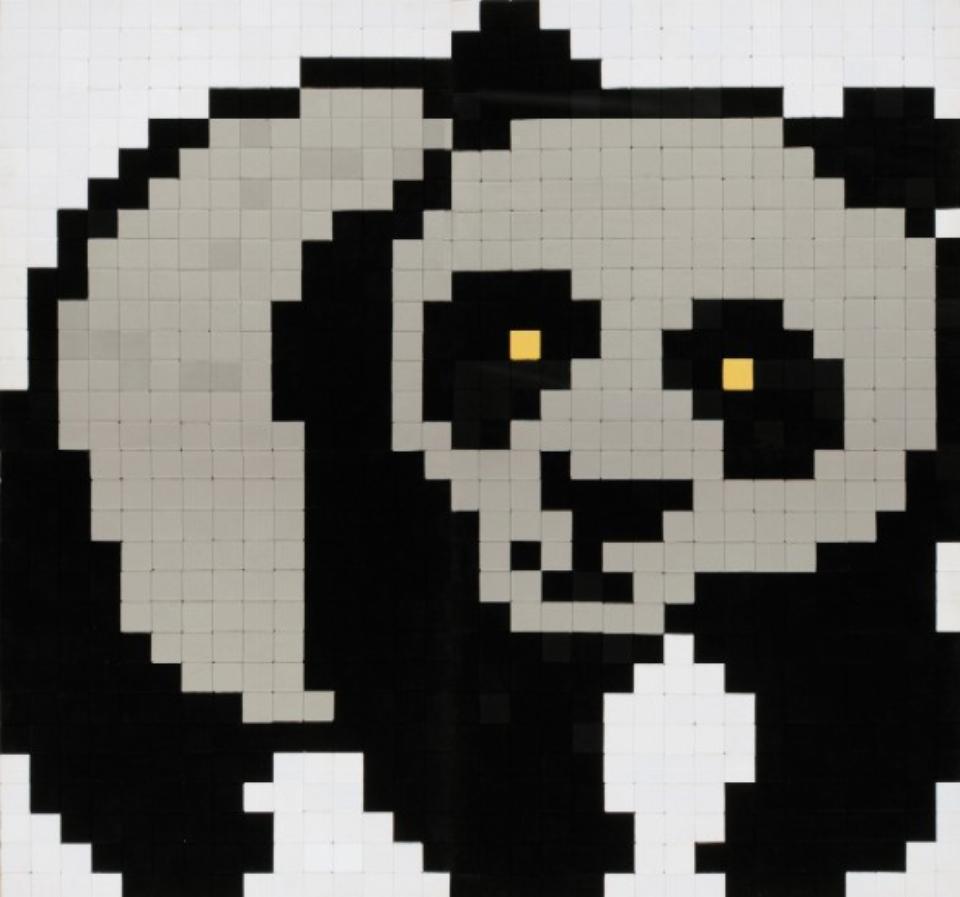Robert Maciejuk
Panda
Robert Maciejuk
Panda, 2001, proprietary technique, 2 pieces of 129 × 147 × 2 cm, 2 pieces of 129 × 129 × 2 cm
Collection II of the Arsenal Gallery in Białystok. Work donated to the Arsenal Gallery by the artist

This image of a panda, assembled from nine hundred square blocks wrapped in black, grey, white and yellow fleece, is consistent with the artist’s other works in which he analyses the functioning of signs and figures from the realm of pop culture. To give context to this incarnation of Tao Tao Panda, known from the cartoon Tao Tao, the Little Panda Bear, one can mention Maciejuk’s paintings featuring other well-known cartoon characters, including Winnie the Pooh, Teddy Floppy Ear, and Colargol and his friend Nordine. Maciejuk painted their oversized outlines on a neutral background to disassociate them from their typical scenery. Maciejuk’s painting technique is flawless and the figures are executed with great precision, giving the fictional bears a rather hyperrealistic quality. The fleece panda, meanwhile, practically begs to be touched.
The images’ surrealism and neutral background make the character we know from childhood seem foreign. While they were friendly in the cartoons, Maciejuk’s paintings show them in a different light. Critics pointed out Teddy Floppy Ear’s vacant eyes, Colargol’s dubious expression, and the ambiguous status of the characters: cartoon individualists and heroes of the young, but in reality only puppets brought to life by television. The discrepancy between what lingers in the memory and what remains when the figures are abstracted from their TV cartoon convention is sizeable.
The figure of the panda was created from blocks that bring to mind pixels or the primitive monochrome digital images that used to flash on early mobile phone screens. The bear from the Japanese animated series is depicted through the convention associated with the world of electronics, with the goal of making children’s cartoon characters almost alive. Intact is its unclear status as a cartoon character, hovering between being a subject and an object. Like in children’s storylines, our perception of the panda is that it is a friendly animal, while the spectrum of connotations it evokes often leaves out the realities of it being an endangered species, its habitat depleted by development and its captivity in zoos. On the surface, Maciejuk’s work only seems to take us back into our childhood memories, but in fact it is very effective in dispelling the illusions those memories produce.
Izabela Kopania

PLAN YOUR VISIT
Opening times:
Thuesday – Sunday
10:00-18:00
Last admission
to exhibition is at:
17.30